Kipuka and More Birds
A kipuka is a section of forest that was not overrun by lava while adjacent areas were—a forest island surrounded by younger lava flows. So the trees are old and tall, the undergrowth is lush, compared to the vegetation on more recent lava (vegetation on a new lava flow can take decades to get much of a foothold). An intact forest in a kipuka is a place where the forest birds can abound. Next to geeking out on lava, I wanted to geek out on trying to record bird sounds: the morning chorus and any and all birds I could manage.
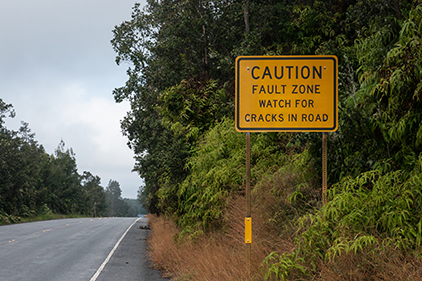
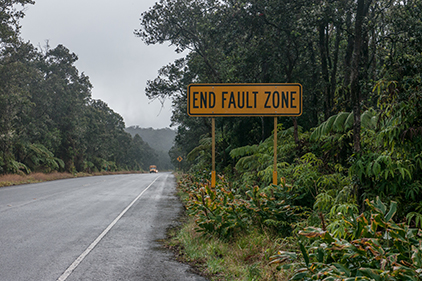
Signs on Highway 11 past the Hawaii Volcanoes National Park. I like the idea of a “no-fault zone.”
Recorded in the Kipukapuaulu.
One thing I discovered: Hawaii Volcanoes National Park is small. The main highway is not far away, so it was a challenge to get a recording without human background sounds. The microphone and recorder simply capture what is there. Sometimes, I needed to use software to subtract background noise from the recordings.
BEFORE CLEANUP:
AFTER CLEANUP:
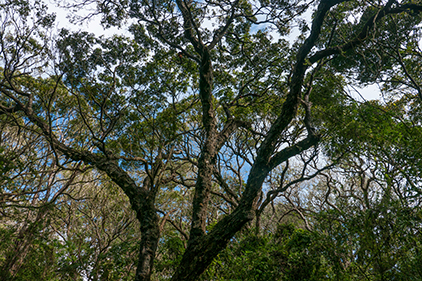
A broadleaf canopy tree in Hawaiian Forests.
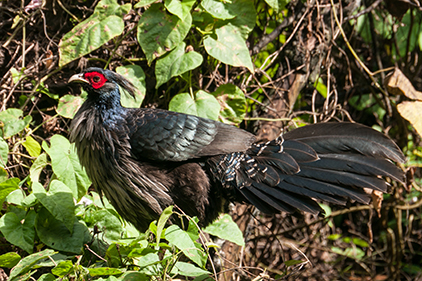
Brought to the Hawaiian Islands for sport hunting, the Kalij pheasant has proliferated.
On the road to Kona a few miles past the Park entrance is a place called Kipukapuaulu, at a higher elevation than the main part of the park, about 5,000 feet. This higher elevation and the fact that lava has left this forest island alone for more than 600 years (the dating of the surrounding lava flows) make for a lush and old middle elevation forest. The park has successfully blocked out pigs and goats (which can do great damage), so the forest is pretty natural, with a few exotic plants needing eradication.

Koa trees (dead tree in center) do not live forever—part of the natural progression of an old forest.
Most of an afternoon and the next morning from before sunrise were spent with mics and recorders. A stereo microphone was set up on a tripod, the recorder started with a guess on the level to set. I then walked away and used a directional mic to try to capture individual birds I night hear. The focus was mostly on recording sounds, so few photos exist from that day, and no photos of the birds I recorded, most of which I could barely see with binoculars.
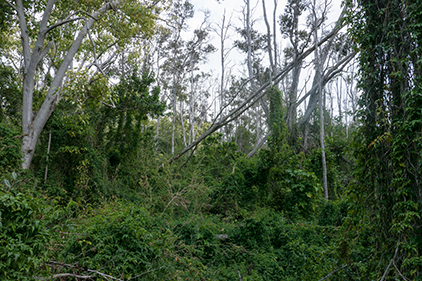
Dense undergrowth.
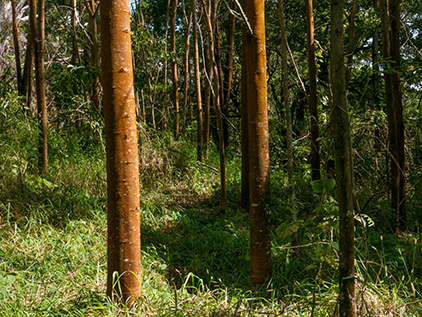
Some of the vegetation in the Kipukapuaulu.
The recordings made with the tripod mounted mic were usually 30 minutes to an hour long. Since I was elsewhere, I’d have no idea what I had captured. Often the results were amazing.
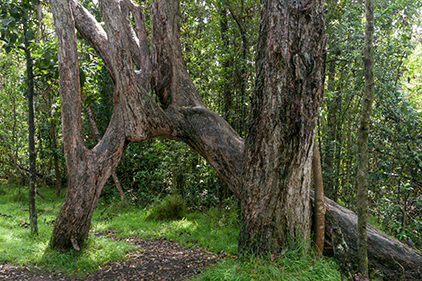
Some of the vegetation in the Kipukapuaulu.
A juvenile myna.
Unidentified, unseen bird making itself heard.
The apapane, a honey creeper—very common in the National Park. You can hear their wingbeats in some of these recordings.
The northern cardinal, a North American bird imported into Hawaii.
One can hear the wingbeats of the apapane flying about.
The varied bird songs in the Kipukapuaulu.
In the parking area at the Kipuka, several Erckel’s francolins (another bird imported to the Hawaiian Islands for sport hunting) were pecking at the ground along the edge of the parking area for the Kipukapuaulu loop trail—a grouping of a couple males, several, females and a juvenile or two. They were parking-lot birds, I think, since they were very approachable. A little bit up the road, the same type of grouping would not let me get close at all. The male’s call sounds a lot like laughing.
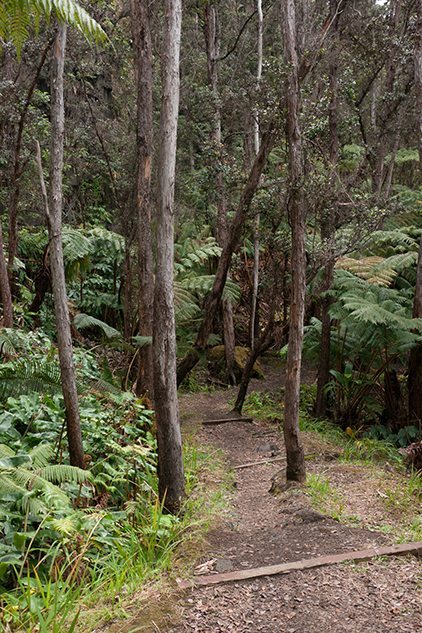
A quiet—except for the birds—trail through a Kipuka forest.
Erckel’s francolin hens making soft sounds.
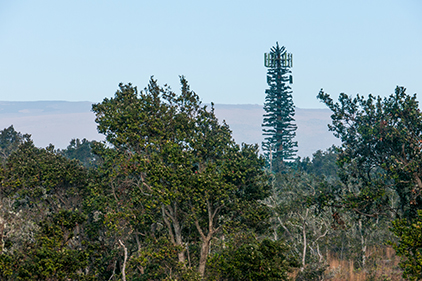
An easy test.
Q: Can you spot the non-native Hawaiian “tree” in this photo? (a.k.a. a cell tower near Park Headquarters)
A male Erckel’s francolin “laughing.”